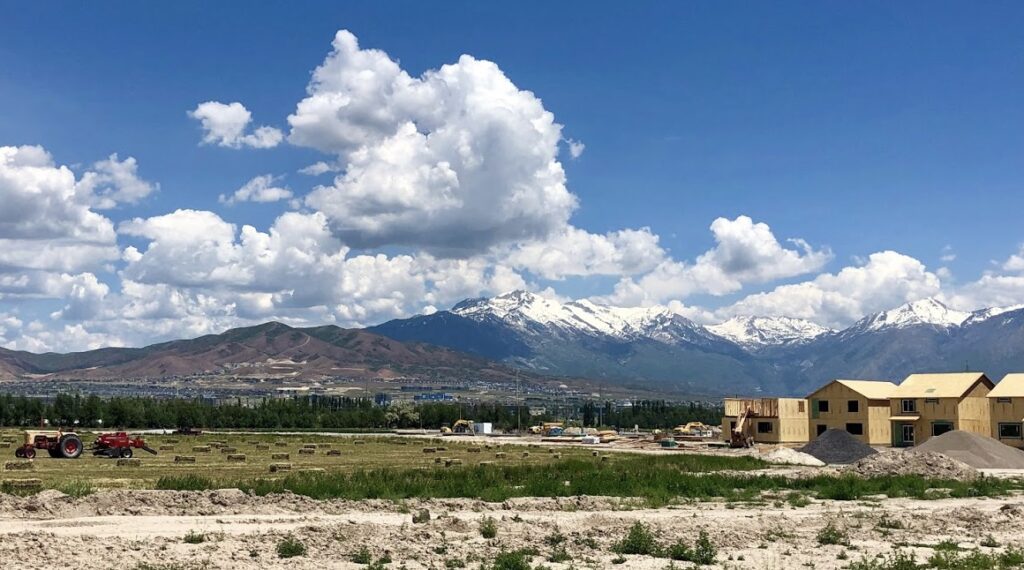Utah communities are changing rapidly, and to help support local planning efforts, members of the Utah State University Extension Utah Wellbeing Project recently surveyed residents about their overall wellbeing and their perspectives on life in their communities. Data collected will help inform decision makers about the perspectives and experiences of residents, which, in turn, can assist in the general planning processes for cities and towns.
The project, led by Courtney Flint, USU professor and Extension community resource specialist, was conducted in partnership with the Utah League of Cities and Towns. In early 2021, over 8,000 surveys were collected from residents of 29 Utah locations, ranging from small rural towns to Wasatch Front cities. Community residents, age 18 and older, were encouraged to take the online survey. City governments led the survey effort with advertising and recruitment, and Flint and her team of students and staff collected and analyzed the data. The Utah League of Cities and Towns will advise on how best to link the data with general planning processes and to help recruit new city partners for future survey efforts.
Key findings from the 2021 survey:
- Due to COVID-19, personal wellbeing declined, ranging from 34% of survey respondents from East Carbon and Vineyard to 62% in Moab. Community wellbeing declined, ranging from 27% of respondents from Vineyard to 79% in Moab.
- COVID-19 impacts on wellbeing were felt most strongly in terms of social connections, cultural opportunities and mental health.
- Out of 29 study cities, Draper had the highest score for overall personal wellbeing. Hyde Park, Bountiful and Vineyard ranked highest for overall community wellbeing.
- Overall in Utah, living standards, safety and security, and connection with nature were the top three rated aspects of wellbeing, referred to in the study as wellbeing domains. Cities varied in terms of most important and most highly rated wellbeing categories.
- Female respondents indicated higher importance of multiple wellbeing domains, particularly education, mental health, safety and security, and social connections. Respondents age 60 and above rated their mental health higher than other age groups in 11 of the study communities. Members of the Church of Jesus Christ of Latter-day Saints consistently rated their wellbeing higher than other responders.
- Across the board, the data showed that feeling connected to community is positively related to personal wellbeing. And, the more connected people felt to their communities, the less likely they were to experience a decline in wellbeing due to COVID-19.
- Concerns for the future of Utah cities varied considerably. In the larger and more rapidly growing Utah cities, primary concerns for over two-thirds of respondents included air quality, water supply, roads and transportation, affordable housing and public safety. For rural communities, opportunities for youth, employment opportunities, and substance abuse accompanied concerns about water supply and affordable housing for at least 70% of respondents.
- Natural landscapes, such as mountains, rivers, streams and trails had overwhelmingly positive influences on wellbeing.
- Perceptions on the rate of population growth and the pace of economic development varied across cities. For places like Draper, Lehi and Moab, both population and economic growth were seen as too fast. For most rural locations, economic growth was generally indicated to be too slow.
Flint said the Utah Wellbeing Project helps city leaders and planners keep their fingers on the pulse of their residents’ experiences.
“Whether they are from small rural towns or Wasatch Front cities, we’ve learned that many Utahns value their natural landscapes and their safety and security,” she said. “That said, each community has a unique set of perspectives and ideas on how to enhance local wellbeing.”
Cameron Diehl, Utah League of Cities and Towns executive director, said the survey provides very insightful data.
“This can guide each community as it plans for residential needs and growth both today and in the future,” he said.
Survey results and further information about the Utah Wellbeing Project can be found at https://extension.usu.edu/business-and-community/utah-wellbeing-project/index. The next survey is anticipated for 2022 and new city partners are welcome.

